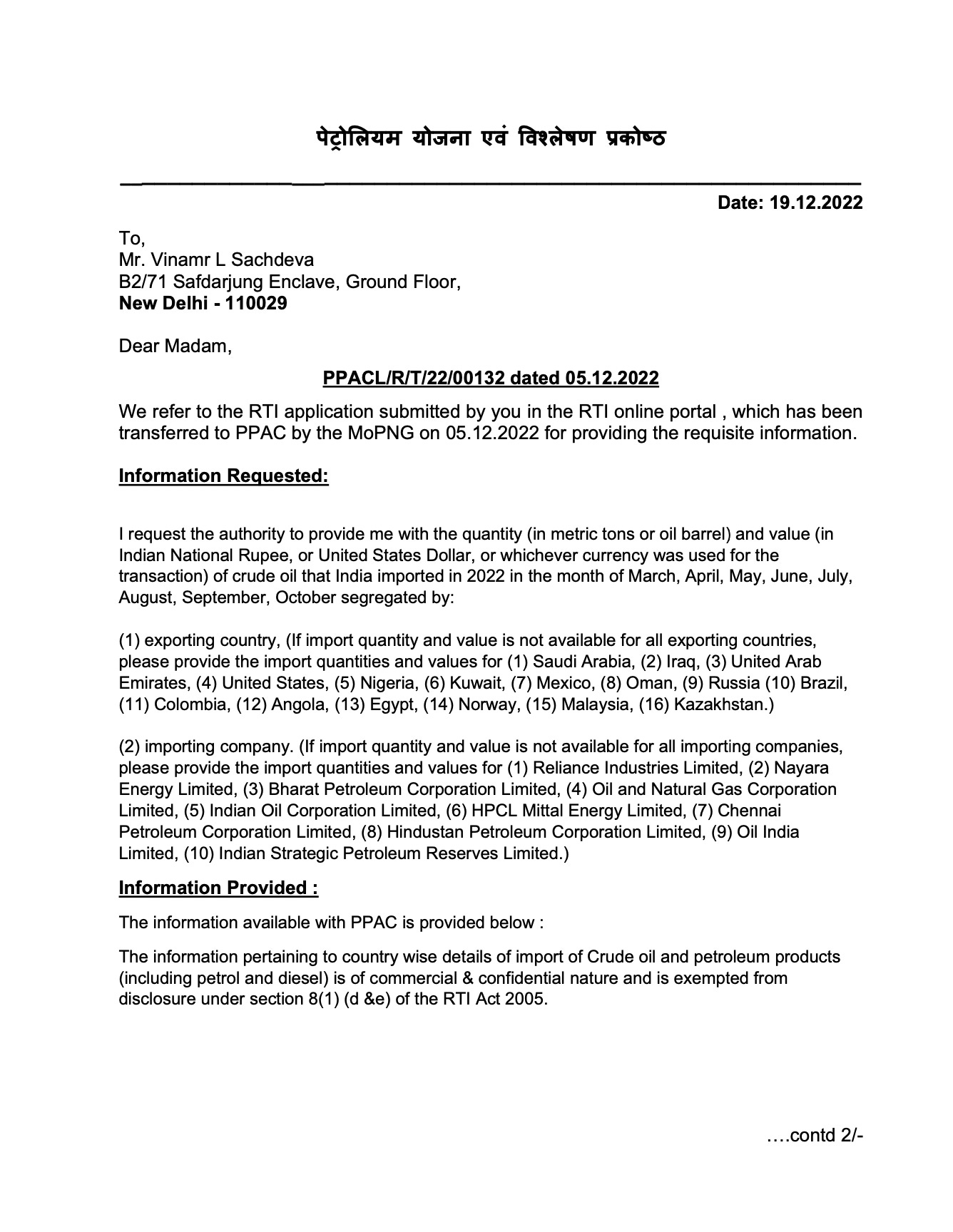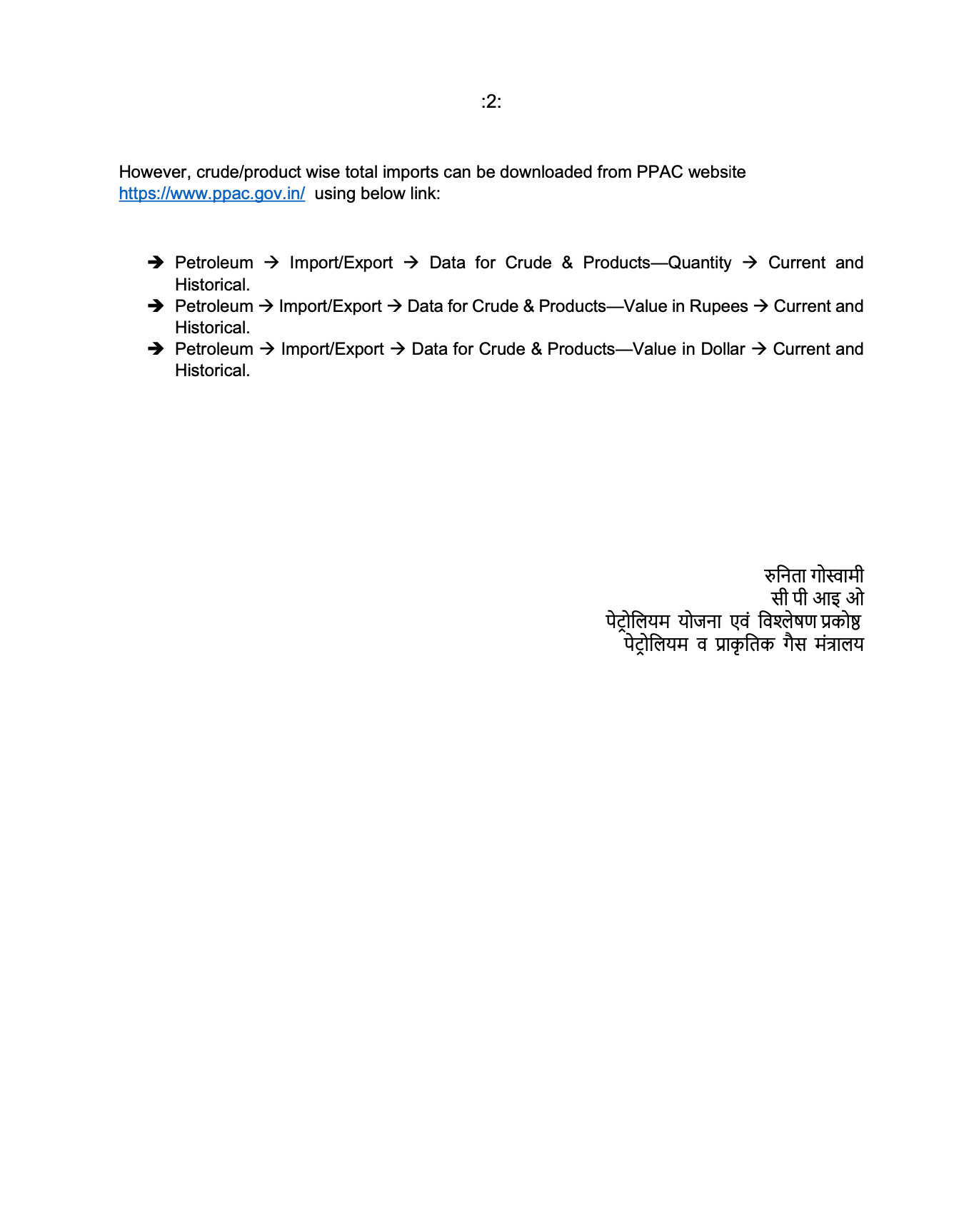A few days ago, Rahul Mehta had put out a Facebook post claiming that the cheap Russian crude that was being imported to India, was being imported by private companies, which was then refined and exported.
Even though I’ve filed an RTI application with the Ministry of Petroleum & Natural Gas, whose reply I’m awaiting (edit: scroll to the bottom for the reply), I came across several secondary sources (thanks to this article by The Print) that confirm what he was saying, so I thought I could curate them in this post and also give an estimate for the import cost based on their numbers for the month of May (not other months of 2022).
1 Import Volume
Business Standard, quotes an energy analytics company, Vortexa, to confirm that private companies, specifically Reliance and Nayara, are the major importers of Russian crude and gives figures for the same month as Refinitiv, May of 2022:
Reliance and Nayara accounted for a combined 69 per cent of Russian shipments to India in May, according to Vortexa, and may sustain such shares going forward, analysts said. Supplies of Urals [Russian oil brand] to Reliance averaged 280,000 barrels a day in May while Nayara absorbed 200,000 barrels a day. The remaining 220,000 barrels a day went to Indian state refiners led by IOC.
For a quick check we can look at this article by Nikkei Asia:
According to financial information provider Refinitiv, nearly 24 million barrels of Russian crude oil arrived in India in May, more than eight times the amount a year earlier. In June, the number remained high at more than 20 million barrels.
If we take the sum of these per day figures from Vortexa and multiply it by 30, we get 21 million, roughly consistent with Refinitiv’s figure but 3 million short. I think it is either that some of it was “lost in approximation” for the per day figures, or that 3 million was imported by other private companies.
2 Import price
According to Nikkei Asia:
Sales [of Russian crude in India] in India are estimated at close to $1.9 billion in May alone, making it an important source of income for Putin’s government.
If we take the 24 million figure for May (Refinitiv), the average price for Russian crude comes out to be around $79 per barrel. This is short of Brent crude, which averaged at around $134, by around $35. If we take the 20 million figure (Vortexa), the average price for Russian crude comes out to be $95, which is just around $18 short of Brent. For a quick check, we can look at the rest of the articles by Nikkei Asia and Business Standard respectively:
Urals crude is $30 to $40 cheaper per barrel than benchmark Brent crude oil, which is particularly attractive to India, given its concerns over its trade deficit.
What has motivated private refiners to step up Russian oil purchases in a big way are reported $25-30/barrel gross discounts on Russian cargoes, record crack spreads, or the profits made from converting crude to diesel or petrol, and strong demand for fuels from Europe, which is reducing reliance on Russian fuels.
This confirms Refinitiv’s 24 million figure.
3 Export destination
According to Nikkei Asia:
Oil products exported from the port in Sikka [port in Jamnagar district] totaled around 75 million barrels in the April-June period, with 20% going to Europe or the U.S.
Further confirmation that hints that the oil product exports source their raw material significantly from Russia:
Around 26 million barrels of Russian oil are believed to have arrived in Sikka alone between April and June, 5.3 times more than the level a year earlier. Russian oil comprises 20% of the total delivered to Sikka via sea.
4 Domestic production
ONGC’s own website says that they contribute “around 71 per cent to Indian domestic production” and The Print article I referenced earlier says that “public refiners are the ones that supply more than 90 per cent of the average Indian’s fuel needs”.

